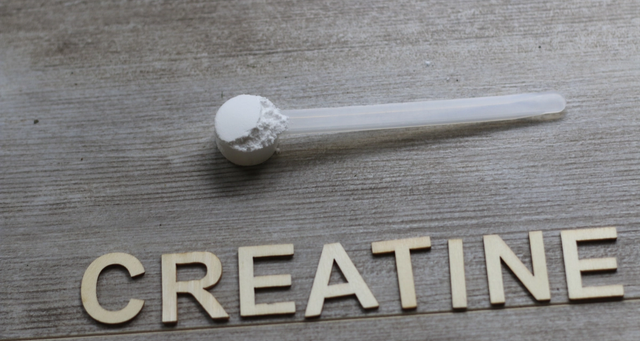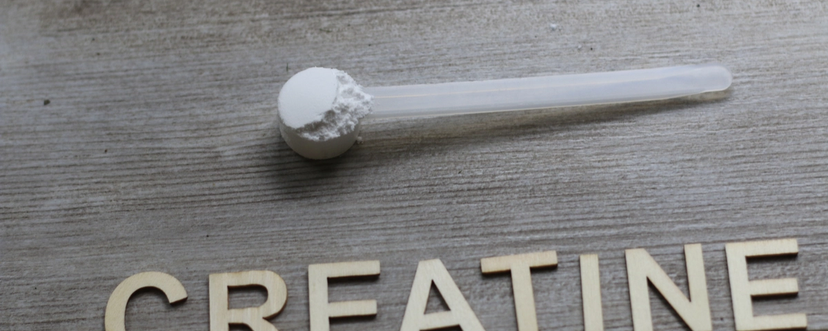
What Science Says is the Best Form of Exercise for Longevity
Living a long and healthy life is a goal that resonates with many people. Longevity, however, is not just about living to an old age; it’s about maintaining the ability to enjoy those years in good health. This means being active, independent, and free from chronic illnesses that can limit quality of life.
While genetics play a role in determining how long a person lives, research from MedlinePlus shows that genes only account for about 25% of variation of lifespan. That means that lifestyle choices, particularly exercise, have an even greater influence on longevity.
The question then becomes: what is the best form of exercise for longevity?
By exploring the latest scientific research, expert insights, and actionable advice, this article takes a closer look at the types of exercise that can help people live longer, healthier lives.
What Longevity Really Means

Longevity is often confused with lifespan, but the two are not the same. While lifespan refers to the total number of years a person lives, longevity emphasizes the quality of those years. This includes a strong focus on healthspan—the years spent in good physical and mental health, free from chronic illnesses or disabilities.
Research Studies suggest has shown that key lifestyle factors such as diet, sleep, stress management, and exercise play a significant role in determining both lifespan and healthspan. Among these, exercise consistently stands out as a powerful tool for enhancing longevity.
Regular physical activity influences many of the biological processes that drive aging. It reduces inflammation, lowers oxidative stress, and improves cellular function. Exercise also supports cardiovascular health, builds muscle mass, and enhances brain health, all of which are crucial for maintaining independence and vitality in later years.
Exploring the Science Behind Exercise and Longevity
The relationship between exercise and reduced mortality is supported by decades of scientific research. Numerous studies have shown that individuals who engage in regular physical activity live longer and enjoy better overall health compared to those who are sedentary.
One study published in the journal PLOS Medicine found that people who exercised regularly had a 20% lower risk of premature death compared to inactive individuals. The benefits were even greater among those who combined different types of exercise, such as cardio and strength training.
Exercise helps extend life expectancy by addressing several key aspects of aging:
Improved cardiovascular health
Physical activity strengthens the heart, reduces blood pressure, and improves circulation, lowering the risk of cardiovascular diseases. Physical activity is crucial for maintaining a healthy heart and circulatory system. Exercise strengthens the heart muscle, making it more efficient at pumping blood. It also helps lower blood pressure, reducing strain on the arteries and decreasing the risk of heart attacks and strokes. Furthermore, exercise improves circulation by increasing blood flow throughout the body, delivering oxygen and nutrients to tissues and organs more effectively. This enhanced cardiovascular health significantly contributes to a longer lifespan.
Cellular Repair and Rejuvenation
Exercise plays a vital role in protecting cells from damage and promoting their repair. It reduces oxidative stress, a process that damages cells and contributes to aging. Exercise also enhances mitochondrial function. Mitochondria are the powerhouses of cells, generating energy for cellular processes. By improving mitochondrial function, exercise helps cells function optimally and resist age-related decline. This cellular protection and rejuvenation contribute to longevity and overall health.
Brain Health and Cognitive Function
Regular physical activity has profound benefits for the brain. Exercise increases blood flow to the brain, delivering oxygen and nutrients essential for optimal brain function. This enhanced blood flow promotes the growth of new brain cells and strengthens connections between existing neurons, improving cognitive function and memory. Studies show that exercise can reduce the risk of dementia, Alzheimer's disease, and other neurodegenerative diseases. By keeping the brain healthy and active, exercise contributes to a longer and more fulfilling life.
Dr. Peter Attia, a leading expert in longevity science, emphasizes that a well-rounded exercise routine is essential for optimal health. According to him, the right balance of physical activity through strength, endurance, and stability training can dramatically improve physical resilience and extend quality of life.
Why Aerobic Exercise is Essential for Health and Longevity
Aerobic exercise, also known as cardiovascular or endurance exercise, involves sustained activities that increase the heart rate and breathing. Common examples include walking, jogging, cycling, swimming, and dancing.
Research consistently shows that aerobic exercise is one of the most effective forms of physical activity for promoting longevity. It offers numerous benefits that directly impact overall health and life expectancy of the general population.
The Benefits of Aerobic Exercise
- Heart health: Aerobic exercise strengthens the heart muscle, improving its efficiency and lowering your resting heart rate. This reduces the risk of heart disease, stroke, and other cardiovascular complications, which remain leading causes of premature death worldwide. By strengthening your cardiovascular system, you're essentially investing in a longer, healthier life.
- Reduced inflammation: Chronic inflammation is a silent threat, contributing to various age-related diseases like arthritis, heart disease, and even cancer. Regular aerobic exercise helps combat this by lowering levels of inflammatory markers in the body. This protective effect contributes to overall health and longevity.
- Enhanced lung function: Aerobic activities, especially those that challenge your breathing, like running or swimming, strengthen your respiratory muscles and increase lung capacity. This improves your body's ability to utilize oxygen, enhancing energy levels, stamina, and overall vitality.
- Improved insulin sensitivity: Cardiovascular exercise plays a crucial role in regulating blood sugar levels by improving how your body responds to insulin. This reduces the risk of developing insulin resistance and type 2 diabetes, a condition that affects millions worldwide and increases the risk of various health complications.
A study published by PubMed found that walking for just 30 minutes a day can reduce the risk of cardiovascular disease by up to 19%.
Experts from the American Heart Association recommend at least 150 minutes of moderate exercise per week. This could be as simple as a brisk 30-minute walk five days a week or a longer hike on weekends. For those looking for greater benefits, adding more vigorous activities like running or cycling can further enhance health outcomes.
Building Strength to Avoid Cardiovascular Disease Mortality

Strength training, often referred to as resistance or weight training, is equally important when it comes to health and longevity. After the age of 30, adults begin to lose muscle mass at a rate of about 3–8% per decade. This condition, known as sarcopenia, increases the risk of falls, fractures, and metabolic disorders.
Strength training helps counteract muscle loss, making it a critical component of any longevity-focused exercise routine.
The Importance of Muscle for Longevity and Cardiovascular Health
- Maintaining mobility: Strong muscles are essential for maintaining mobility and independence as you age. They provide support for your joints and bones, enabling better balance, coordination, and ease of movement. This allows you to perform everyday activities with greater ease and reduces the risk of falls and injuries. Maintaining muscle mass also contributes to a more active lifestyle, which has numerous physical health benefits.
- Preventing osteoporosis: Resistance training, which focuses on building and strengthening muscles, also has a profound impact on bone health. It stimulates bone growth and increases bone density, making your bones stronger and less susceptible to fractures. This is particularly important as you age, as bone density naturally declines, increasing the risk of osteoporosis. Strong bones contribute to overall health, mobility, and quality of life.
- Improving metabolic health: Muscle tissue is a metabolically active tissue, playing a crucial role in regulating blood sugar and fat metabolism. Having more muscle mass helps your body utilize glucose more efficiently, reducing the risk of insulin resistance and type 2 diabetes. It also increases your resting metabolic rate, meaning you burn more calories even at rest, which can help with weight management and prevent obesity. A healthy metabolism is crucial for overall health and longevity.
Incorporating exercises like squats, lunges, push-ups, weight lifting and forms of exercise using resistance bands into a weekly routine can contribute to a longer life. For those new to strength training, starting with bodyweight exercises and gradually progressing to weights is a safe and effective approach.
Flexibility and Balance as Keys to Mobility
Flexibility and balance exercises are often overlooked, as people focus on more intense exercise, but they are essential for maintaining independence and preventing injuries, especially as people age.
Practices like yoga, Pilates, and tai chi not only improve range of motion but also enhance core strength and stability and reduce stress. These exercises are particularly beneficial for healthy older adults, as they help reduce joint pain and the risk of falls—a leading cause of injury and hospitalization among seniors. These exercises, while only calling for moderate physical activity, are also really good for mental well-being.
A study published in Frontiers in Aging Neuroscience found that balance exercises improve coordination and cognitive function, further enhancing quality of life in later years. Incorporating flexibility and balance training two to three times a week can significantly improve mobility and overall physical resilience.
High-Intensity Interval Training for Longevity
High-Intensity Interval Training (HIIT) alternates short bursts of intense effort with periods of rest or low-intensity activity. This type of exercise has gained popularity for its efficiency and powerful health benefits.
HIIT improves cardiovascular fitness, boosts metabolism, and stimulates cellular repair mechanisms, all of which can contribute to a long life.
Why HIIT Works
- Time efficiency: HIIT is your secret weapon for busy schedules. A 20-minute HIIT session can deliver comparable cardiovascular and metabolic benefits to a much longer period of steady-state cardio, like jogging. This makes it an excellent choice for those who want to maximize the results of their cardio workouts in minimal time.
- Enhanced metabolic function: HIIT doesn't just burn calories during your fitness routiine; it ignites your metabolism for hours afterward. This type of training increases your body's ability to burn fat for fuel, even when you're at rest. It also improves how your body regulates blood sugar levels, reducing the risk of insulin resistance and type 2 diabetes.
- Improved heart health: HIIT is a powerful tool for strengthening your cardiovascular system. The intense bursts of activity challenge your heart muscle, improving its efficiency and increasing your VO2 max (the maximum amount of oxygen your body can utilize during regular exercise). This translates to better heart health, improved circulation, and reduced risk of cardiovascular disease
HIIT can significantly improve VO2 max (a measure of aerobic fitness) in a short period, making it a great option for those with busy schedules. However, beginners should start slowly and prioritize proper form to avoid injury.
Incorporating Movement Into Daily Life

While structured workouts are important, daily movement and moderate activity also has significant longevity benefits. Activities like brisk walking, gardening, and stair climbing may seem small, but they contribute to overall physical activity and fitness levels and reduce the higher risk associated with a sedentary lifestyle.
The World Health Organization recommends minimizing sedentary time and incorporating light physical activity throughout the day. Strategies like walking meetings, standing desks, and setting reminders to move every hour can make a big difference over time.
Vigorous Exercise Vs. Moderate Exercise
When it comes to exercise, intensity matters. Moderate exercise, like brisk walking or swimming, allows for conversation while elevating your heart rate for improved cardiovascular health and weight management. Vigorous exercise, such as running or HIIT, pushes you further, leaving you breathless and maximizing calorie burning and cardiovascular fitness.
Choosing between them depends on your fitness level and goals. Start with moderate activities and gradually increase intensity if you're new to exercise. Both forms contribute to a healthier life, so find what you enjoy and get moving!
Insights From Dr. Peter Attia on Exercise for Longevity
Dr. Peter Attia, a renowned physician and longevity expert, offers a unique perspective on exercise. He advocates for a balanced approach that prioritizes not just lifespan, but also "healthspan" – how well we live those years. His concept of the "Centenarian Decathlon" emphasizes preparing for the physical demands of aging by maintaining the ability to perform everyday tasks with ease.
This framework encourages individuals to focus on movements that translate to real-life situations, like lifting groceries, climbing stairs, and getting up from the floor effortlessly. Dr. Attia highlights the importance of strength training to preserve muscle mass and bone density, along with flexibility and balance training to prevent falls.
Beyond specific exercises, Dr. Attia emphasizes consistency, advocating for making exercise a non-negotiable daily habit. He also encourages variety, incorporating different types of movement to challenge your body and prevent plateaus. This approach ensures you're building a foundation for a healthy, active, and independent future.
Tailoring Exercise Plans to Individual Needs
Exercise is not one-size-fits-all. Factors like age, fitness level, and health conditions should be considered when designing a plan for long-term success. Consulting with healthcare professionals, an exercise physiologist, or a certified personal trainer ensures your routine is both safe and effective. Regularly reassessing your goals and progress allows you to adjust your plan as needed, keeping you on track for a healthier life. Services like Svetness let you choose a personal trainer who specializes in creating customized fitness plans to help you achieve your health and longevity goals.
Staying Consistent With Your Routine
Consistency is key for any effective exercise plan. Regular physical activity is crucial for reaping the long-term benefits, from improved cardiovascular health to enhanced mood. However, challenges like time constraints, lack of motivation, or unexpected life events can disrupt even the best intentions.
To stay consistent, start by setting realistic goals that fit your lifestyle. Don't aim for drastic changes overnight; instead, focus on small, achievable steps that you can build upon gradually. Choose activities you genuinely enjoy, making exercise a pleasure rather than a chore. Consider finding a workout buddy or joining a fitness community to stay motivated and accountable.
Celebrating small milestones along the way can also help maintain enthusiasm. Acknowledge your achievements and reward yourself for your efforts. Remember, focus on gradual progress, not perfection. Even small amounts of exercise accumulated over time contribute to significant health benefits.
So, What is the Best Exercise for Longevity?
Exercise is one of the most powerful tools for enhancing longevity. A combination of aerobic fitness, strength training, flexibility, and balance exercises can help individuals live longer, healthier lives while maintaining their independence and vitality.
By tailoring exercise routines to individual needs and staying consistent, anyone can take meaningful steps toward improving their healthspan and quality of life. The science is clear—movement is key to living not just longer but better.
Frequently Asked Questions
What is the best anti-aging exercise?
There isn't a single "best" exercise, but a combination of strength training, aerobic activity, and flexibility exercises provides the most comprehensive anti-aging benefits.
How much exercise do you need to do for longevity?
Aim for at least 150 minutes of moderate-intensity or 75 minutes of vigorous-intensity aerobic exercise per week, along with two strength training sessions.
Why are cardiovascular exercises important for longevity?
Cardiovascular exercises strengthen the heart, improve circulation, and reduce the risk of heart disease, a leading cause of death.
What are examples of vigorous physical activity?
Vigorous activities include running, swimming laps, HIIT workouts, and competitive sports.
Can you provide recommendations for minutes of moderate-intensity exercise?
Aim for at least 30 minutes of moderate-intensity exercise most days of the week, such as brisk walking, cycling, or dancing.
Start your Svetness journey today
Get a free consultation and see how our trainers can transform your wellness journey.





